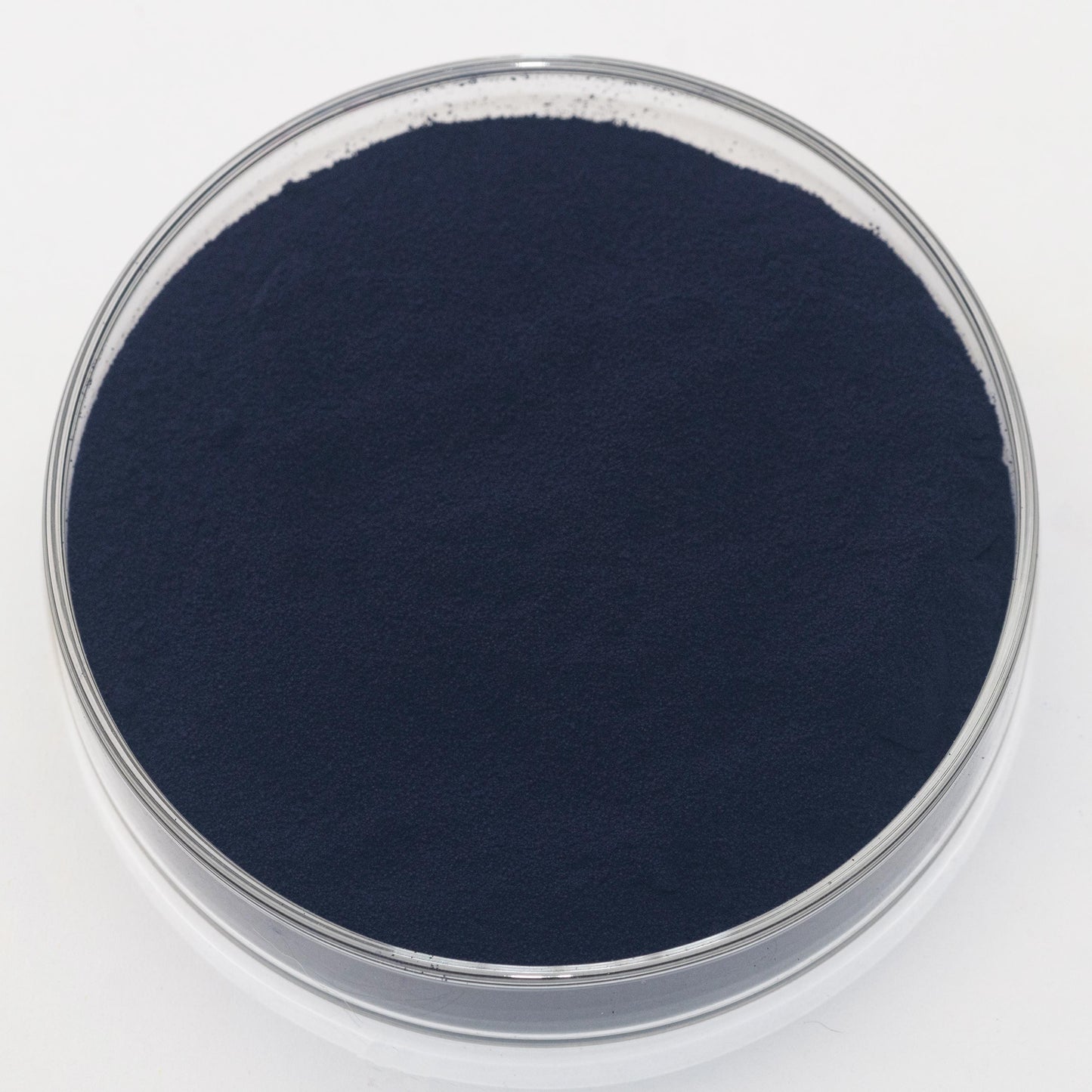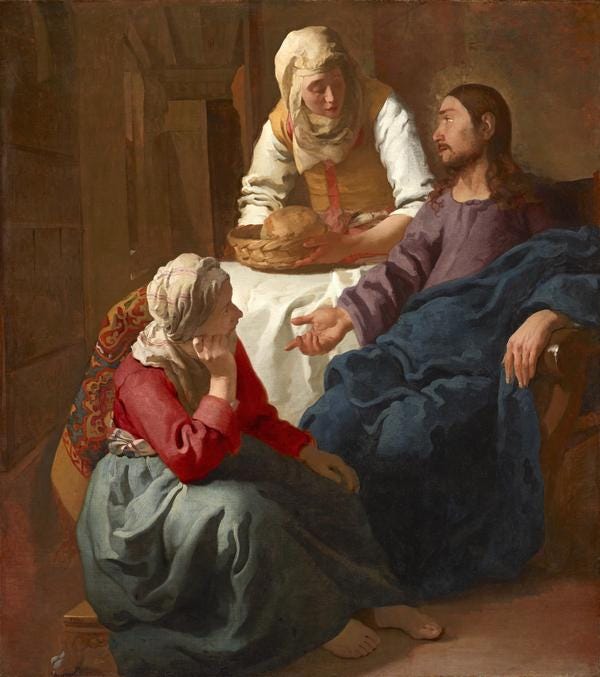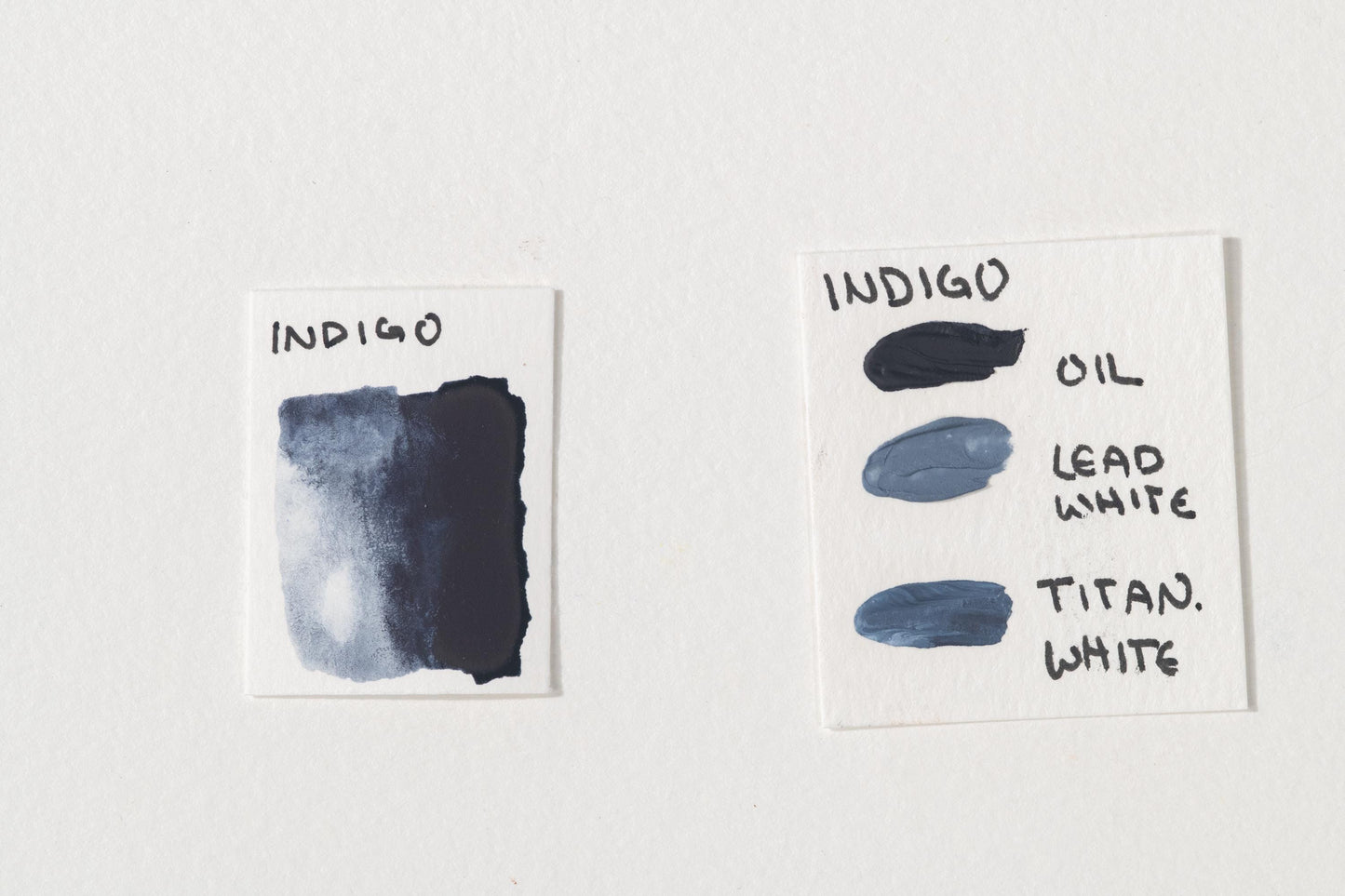Indigo
Indigo
Couldn't load pickup availability
Share



Description
Indigo is a handmade single pigment derived from the leaves of the Indigofera tinctoria plant. This pigment is traditionally processed through fermentation, the resulting deep blue dye is one of the oldest and most widely used natural pigments in human history. This pigment goes through further refinement to get deeper shade and higher chroma than unprocessed indigo would. Indigo’s rich, transparent blue tone makes it ideal for layering and glazing, creating atmospheric effects in painting and textile applications.
Indigo has good lightfastness and blends seamlessly with other colors, producing deep, rich blues as well as subtle green tones when mixed with orpiment or yellow pigments. Its translucence allows for soft shading and subtle tonal variations in watercolor, oil, and tempera applications. Compared to synthetic blues such as Prussian Blue or Phthalo Blue, Indigo provides a more organic and historically significant depth, making it a preferred choice for natural palettes and historical reconstructions.
History
Indigo has been one of the most important pigments for thousands of years, highly valued for its vibrant color and durability.
During antiquity, Indigo was used extensively in textiles, manuscript illumination, and mural painting. The earliest known use dates back to 4000 BCE in Mesopotamia and ancient Egypt, where it was used for dyeing fabrics and painting. The Greeks and Romans traded indigo as a valuable commodity, importing it from India along the Silk Road.
In the Islamic Golden Age (8th–14th centuries), Indigo was a key pigment in illuminated manuscripts, ceramics, and wall paintings. Islamic artists in the 14th century discovered that mixing Indigo with orpiment (a yellow arsenic sulfide) could produce beautiful shades of green, a technique later mentioned in Cennino Cennini’s 15th-century treatise on painting.
During the Renaissance and Baroque periods (15th–18th centuries), Indigo continued to be widely used in painting, textiles, and printing. It was an essential component in the European dye trade, leading to the establishment of large-scale plantations in India and the Americas. In the pictured artwork 'Christ in the House of Martha and Mary' by Johannes Vermeer, indigo is used to create the rich and luscious blues of Christ's robes.
By the 19th and 20th centuries, Indigo production shifted to synthetic alternatives, notably the discovery of synthetic Indigo in 1865 by Adolf von Baeyer. This dramatically reduced the reliance on natural sources, though traditional Indigo remains in use for historical restoration, textile arts, and fine painting.
Today, Indigo remains a significant pigment in traditional art, textile dyeing, and natural color palettes. Its unique history and organic vibrancy continue to make it a sought-after pigment for artists and conservators.
Health and Safety
Precautions:
Keep out of reach of children and pets.
Do not consume.
Not for cosmetic or food usage.
Do not spray apply.
For further health information contact a poison control center.
Use care when handling dry pigments and avoid dust formation.
Use particular caution with fibrous, fine, or toxic pigments.
Do not eat, drink, or smoke near dry pigments.
Avoid breathing in pigment dust and use a NIOSH-certified dust respirator with sufficient rating for dry pigment.
Wash hands immediately after use or handling.
If dust is likely, always wear protective clothing to keep out of eyes, lungs, off skin, and out of any contact as well as keep area ventilated.
This product may contain chemicals known by the State of California to cause cancer, birth defects, or reproductive harm.
Warnings and bottle information are abbreviated.
Pigment Information
Pigment Type: Natural (Plant-derived) from Indigofera tinctoria
Suitable Mediums: Watercolor, Oil, Tempera, Acrylic, Textile Dyeing
Lightfastness: Good
Opacity: High translucence
Other Names: Natural Indigo, Indian Blue, True Indigo, Woad (for European varieties)
Color Index Code: NB1
Image: 'Christ in the House of Martha and Mary' by Vermeer from the Scottish National Gallery Edinburgh



